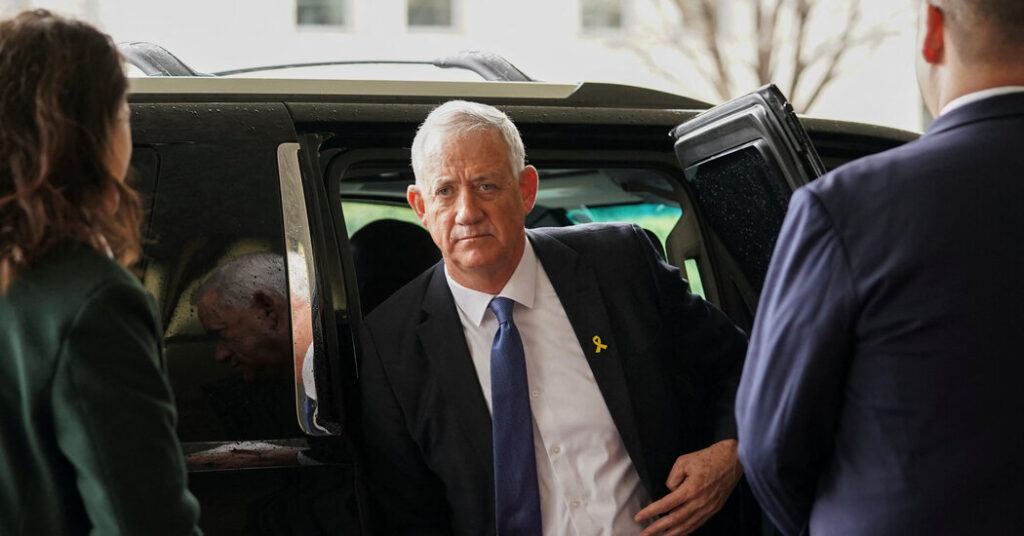A day after Israeli forces bombed a United Nations school building in central Gaza that had become a shelter for displaced Palestinians, some facts remain unclear or disputed.
Israel said it attacked three classrooms used by 20 to 30 Palestinian militants, including some who had taken part in an Oct. 7 Hamas-led attack on Israel, and said it was unaware of any civilian casualties. Health authorities in Gaza said dozens of people died, many of them children and women. Here’s what we know and don’t know.
What was bombed?
The multi-storey building is one of several buildings at UNRWA’s Nuserat Boys’ Preparatory School. It is one of many schools run by leading United Nations agencies in Gaza for Palestinian refugees and their descendants.
Like all schools in the territory, the school ceased operations in October after Hamas launched attacks against Israel and Israel began retaliatory bombings. Like many of them, it is crowded with people who have fled their homes in other parts of Gaza because of the war and have sought refuge in schools, hospitals and other institutions that they hope will not be bombed.
Philippe Lazzarini, director of the United Nations aid agency for Palestinian refugees, said 6,000 people have been living in the school. About three-quarters of Gaza’s estimated 2.2 million people have fled their homes, many of them multiple times.
The Israeli military calls the school in Nuserat a militant base, saying fighters from Hamas and Palestinian Islamic Jihad use the school’s three classrooms to plan and target operations against Israel.
How many people were killed in Nuserat and who were they?
The Israeli military on Friday released the names of eight Hamas and Palestinian Islamic Jihad fighters it said were killed in attacks, and a list released on Thursday added to that number, bringing the total to 17.
Military spokesman Lt. Col. Peter Lerner said Thursday that he was “not aware of any civilian casualties as a result of this attack.” The military did not respond when asked on Friday whether that was still the case.
But witnesses, medics and Gaza officials said dozens of civilians, many of them children or women, were killed.
A Gaza health ministry official said on Thursday that at least 41 people had died, while another official said 46 had died. Khattab said many bodies were removed from the hospital. But his claims could not be independently verified.
Mr Khattab said the hospital had a sophisticated system in place to record and identify bodies and body parts. “We look for any markers that can help us identify the person,” he said.
A reporter from The New York Times went to the hospital after the explosion and saw that the hospital was packed with the dead, the living and relatives of the two people, with medical staff trying to squeeze through the crowd. Witnesses described pulling the remains of children from the rubble of the school.
Karin Huster, a medical coordinator for the aid group Doctors Without Borders who has been working at the hospital, said most of the patients she has seen over the past few days have been women and children.
How cautiously is Israel acting?
The Nuseirat bombing exemplified the horrific calculations of the eight-month-long war. Hamas, which operates within densely populated neighborhoods, has been accused of cynically using Palestinians and civilian infrastructure as a shield. Israel has regularly killed civilians when targeting Hamas and has even been accused by its allies of using excessive force.
The Israeli military insisted the airstrikes were carefully planned and carried out with precision, targeting only three rooms in the school used by the militants. There and at a camp in Rafah — where Israeli bombing and subsequent fires killed 45 people in late May, according to Gaza officials — Israel used U.S.-made GBU-39 bombs containing about 37 pounds of explosives , the military said the bombs were the smallest ever carried by its warplanes.
The military said 20 to 30 militants used the school as a base, some of whom were involved in the Oct. 7 attack. They were said to have been keeping them under surveillance for three days before launching airstrikes to minimize civilian casualties.
The international laws of war prohibit the use of places such as hospitals, schools and houses of worship for military purposes. These laws also prohibit the military from attacking these locations, with limited exceptions if the enemy is using the locations.
Israel said its operations were carried out within the scope of that exception because Hamas often operates inside the buildings and in the tunnels beneath them, resulting in unavoidable civilian casualties.
“We see that Hamas still exists, they still have above-ground and underground capabilities,” Colonel Lerner said Thursday.
In recent months, Israeli forces have repeatedly returned to places such as Nuserat where they had previously seized control, and then continued their advance as Hamas militants reappeared there. Israeli officials said this justified attacks like Thursday’s.
Legal experts say how far an attacking force can go in such an operation varies on a case-by-case basis, depending on how the attacking force protects and distinguishes civilians from combatants and how the attack is proportional to the military advantage gained. . In other words, it can be very vague in certain situations.
Richard Perez-Pena and Everat Livni Contributed reporting.

